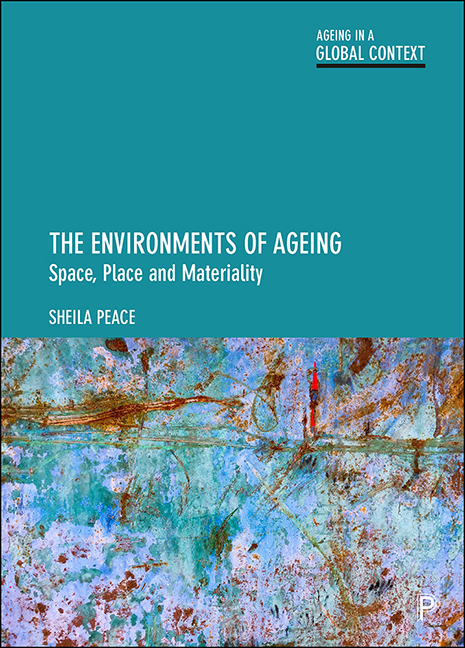Book contents
- Frontmatter
- Dedication
- Contents
- List of figures and tables
- Research summaries
- List of acronyms
- About the author
- Acknowledgements
- Series editors’ preface
- Preface: understanding the structure
- 1 Person and environment
- 2 Theoretical development
- 3 The global context
- 4 Environmental living
- 5 Housing in later life
- 6 Housing histories, housing options
- 7 Alternative environments: specialised housing (with care)
- 8 Care home living: a form of long-term care
- 9 Methodological development
- 10 Rethinking the spatiality of ageing
- Glossary of terms
- References
- Index
5 - Housing in later life
Published online by Cambridge University Press: 15 September 2022
- Frontmatter
- Dedication
- Contents
- List of figures and tables
- Research summaries
- List of acronyms
- About the author
- Acknowledgements
- Series editors’ preface
- Preface: understanding the structure
- 1 Person and environment
- 2 Theoretical development
- 3 The global context
- 4 Environmental living
- 5 Housing in later life
- 6 Housing histories, housing options
- 7 Alternative environments: specialised housing (with care)
- 8 Care home living: a form of long-term care
- 9 Methodological development
- 10 Rethinking the spatiality of ageing
- Glossary of terms
- References
- Index
Summary
Introduction
More than 90 per cent of older people in the UK live in general needs housing, forming the major component when discussing environments of ageing. Table 5.1 outlines the range of housing forms in later life. Approximately 5–6 per cent of the older population live in age-related communal housing, discussed in Chapter 7 along with co-housing, intentional housing that can be intergenerational or age-related. Additionally, 4–5 per cent live in care homes (residential and nursing care), which includes 15 per cent of the population aged 85 and over (Laing, 2018) and forms the focus of Chapter 8 (comparable typologies are seen in the Housing our Ageing Population: Panel for Innovation (HAPPI) report, written by Barac and Park, 2009, p 2 (see Glossary) and Park and Porteus, 2018, p 131).
This chapter focuses on mainstream housing, where housing type, tenure, standards and markets embed individual housing histories. It begins with a reflection on housing development during the 20th century to contextualise environments of ageing identified through the English Housing Survey. Then it moves to the built environment and housing policy, reflecting on how building regulations affect housing design. Issues regarding inclusive design and how dwellings seen as non-ableing could be retrofitted or adapted are discussed alongside the growing development of assistive technology. The chapter ends with further reflections on housing as home, the impact of receiving care in current housing and how older people are becoming involved in co-designing future housing. This sets the scene for the empirical research that is featured in Chapter 6, where general housing is considered with regard to the meaning of home.
Housing development in the UK: 20th century onwards
At the turn of the 20th century, the UK (as home to the industrial revolution) faced a need for housing reform, particularly ‘slum clearance’ for the working poor who were living in the worst conditions. In this brief history, we focus primarily on developments in England. In the late 19th century, housing reform was an endeavour noted in the efforts of bodies such as the Peabody Trust in London, industrial proprietors such as George Cadbury and William Hesketh Lever working to house their employees in Bournville and Port Sunlight in the Midlands and North-West England respectively.
- Type
- Chapter
- Information
- The Environments of AgeingSpace, Place and Materiality, pp. 103 - 132Publisher: Bristol University PressPrint publication year: 2022

